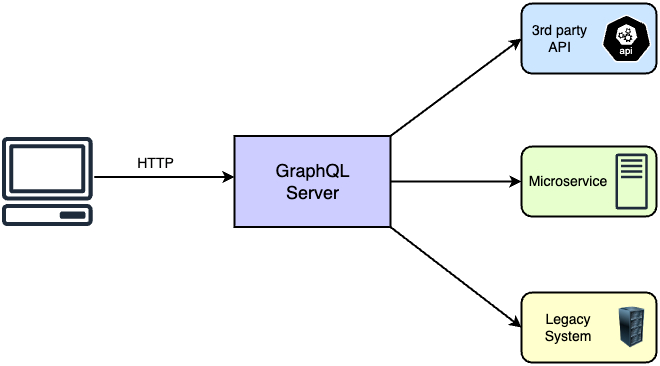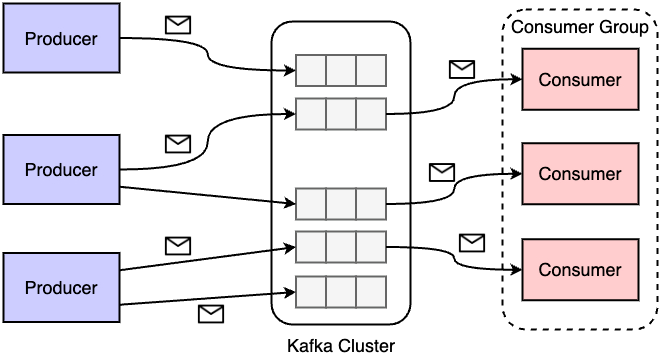Understanding API Technologies: A Comparative Analysis of REST, GraphQL, and Asynchronous APIs
Learn about the advantages vs. disadvantages and ideal use cases for REST, GraphQL, and Async APIs in this concise guide.
Join the DZone community and get the full member experience.
Join For FreeEditor's Note: The following is an article written for and published in DZone's 2024 Trend Report, Modern API Management: Connecting Data-Driven Architectures Alongside AI, Automation, and Microservices.
APIs play a pivotal role in the world of modern software development. Multiple types of APIs can be used to establish communication and data exchange between various systems. At the forefront lies the REST approach, which has dominated the industry due to its simplicity and scalability. However, as technology has evolved, the demands of developers and businesses have also changed. In recent years, alternatives such as GraphQL and asynchronous event-driven APIs have also emerged. They offer distinct advantages over traditional REST APIs.
In this article, we will look into each of these API technologies and build a comparative understanding of them.
REST: The Start of Resource-Oriented Communication
REST architecture revolves around the concept of resources. These are entities that can be managed through standard HTTP methods such as GET, POST, PUT, and DELETE. One of the key characteristics of REST is its stateless nature, where each request from a client contains all the necessary information for the server to fulfill it. This decouples the client and server, allowing them to be scaled independently.
Advantages and Disadvantages of REST
REST APIs have some significant advantages:
- REST follows a simple and intuitive design based on standard HTTP methods.
- Each request in the REST approach is independent, resulting in better scalability and reliability.
- REST utilizes HTTP caching mechanisms to enhance performance and reduce the load on the origin server.
- REST is interoperable, working well with various programming languages and platforms due to its standard format.
However, REST architecture also has several disadvantages:
- REST APIs can result in overfetching, where clients receive more data than needed, leading to inefficiency and waste of network bandwidth.
- Similar to the first point, REST APIs can also suffer from underfetching, where multiple requests are needed to fulfill complex data requirements. This results in increased latency.
- REST follows a synchronous approach that can lead to blocking and performance issues in high-load scenarios.
- Changes to the API's data schema can impact clients, resulting in tight coupling.
Use Cases of REST APIs
There are ideal use cases where REST APIs are much better suited when compared to other types of APIs, for example:
- Caching intensive applications – A read-heavy application, such as news websites or static content, can benefit from REST's caching mechanism. The standardized caching directives of REST make it easier to implement.
- Simple CRUD operations – When dealing with straightforward CRUD operations, REST APIs offer simplicity and predictability. Applications with a clear and static data model often find REST APIs to be more suitable.
GraphQL: The Rise of Declarative Data Fetching With APIs
GraphQL is a combination of an open-source language for querying data as well as a runtime for fulfilling those queries. The key principle behind GraphQL is to have a hierarchical structure for defining data queries, letting the clients precisely specify the data they need in a single request.
Figure 1. GraphQL in the big picture

In quite a few ways, GraphQL was a direct response to the issues with the traditional REST API architecture.
However, it also promotes a strongly typed schema, offering developers a clear idea of what to expect. GraphQL supports real-time data updates through subscriptions. Over the years, a lot of work has happened on tools like GraphQL Federation to make GraphQL APIs more scalable for large enterprises with multiple domain areas.
Advantages and Disadvantages of GraphQL
GraphQL provides some key advantages:
- With GraphQL, clients can request only the specific data they need. This eliminates the overfetching and underfetching issues with REST APIs.
- GraphQL's strongly typed schema approach provides a clear structure and validation, speeding up development and documentation.
- GraphQL typically operates through a single endpoint. Clients just need to care about a single endpoint while talking to a GraphQL server even though there might be multiple sources for the data.
- Built-in introspection allows clients to explore the schema and discover available data and operations.
There are also several disadvantages to GraphQL:
- Implementing GraphQL requires additional effort and expertise when compared to traditional REST APIs.
- Since the queries in GraphQL are flexible, caching of data can be challenging and may need custom solutions.
- While GraphQL reduces overfetching at the top level, nested queries can still lead to unnecessary data retrievals.
- Ownership of the common GraphQL layer becomes confusing, unlike the clear boundaries of a REST API.
Use Cases of GraphQL
There are specific scenarios where GraphQL does a better job as compared to REST APIs, for instance:
- Complex and nested data requirements – To fetch data with complex relationships, GraphQL helps clients precisely specify the data they need in a single query.
- Real-time data updates – GraphQL subscriptions help applications handle real-time data updates such as chat applications or live dashboards. With GraphQL, clients can subscribe to changes in specific data, allowing real-time updates without the need for frequent polling.
- Microservices architectures – In this case, data is distributed across multiple services. GraphQL provides a unified interface for clients to query data from various services. The client application doesn't have to manage multiple REST endpoints.
Asynchronous APIs: A Shift to Event-Driven Architecture
Over the years, the push to adopt, or migrate to, a cloud-native architecture has also given rise to event-driven architectures, the advantage being the prospect of non-blocking communication between components. With asynchronous APIs, clients don't need to wait for a response before proceeding further. They can send requests and continue their execution process. Such an approach is advantageous for scenarios that require high concurrency, scalability, and responsiveness.
In event-driven systems, asynchronous APIs handle events and messages along with help from technologies like Apache Kafka and RabbitMQ, which offer a medium of communication between the message producer and the consumer.
Considering a typical system using an event-driven API approach, we have producers publish events to topics, and consumers subscribe to these topics to receive and process the events asynchronously. This allows for seamless scalability and fault tolerance because both producers and consumers can evolve independently. The below diagram shows such a system:
Figure 2. An event-driven system with Kafka and asynchronous APIs

Advantages and Disadvantages of Asynchronous APIs
There are some key advantages of asynchronous APIs:
- Asynchronous APIs are well suited for handling high concurrency and scalability requirements since multiple requests can be handled concurrently.
- Asynchronous APIs also enable real-time data processing by enabling timely response to events.
- Asynchronous APIs can also help better utilize system resources by offloading tasks to background processes.
- Lastly, asynchronous APIs increase the general fault tolerance of a system as one component failing doesn't disrupt the entire system.
However, just like other API types, asynchronous APIs also have several disadvantages:
- There is increased complexity around message delivery, ordering, and error handling.
- Asynchronous APIs are more challenging to debug and test.
- Systems built using asynchronous APIs often result in eventual consistency, where data updates aren't immediately reflected across all components.
- Asynchronous APIs can also increase costs with regard to special systems for handling messages.
Use Cases of Asynchronous APIs
There are a few ideal use cases for asynchronous APIs when compared to REST and GraphQL APIs, including:
- Real-time data streaming – Asynchronous APIs are the best choice for real-time data streaming needs such as social media feeds, financial market updates, and IoT sensor data. These applications generate large volumes of data that need to be processed and delivered to clients in near real time.
- Integration with third-party systems – Asynchronous APIs are quite suitable for integrating with third-party systems that may have unpredictable response times or availability SLAs.
- Background tasks – Lastly, applications that require execution of background tasks — such as sending emails, notifications, or image/video processing — can benefit from the use of asynchronous APIs.
Side-by-Side Comparison of REST, GraphQL, and Asynchronous APIs
We've looked at all three types of API architectures. It is time to compare them side by side so that we can make better decisions about choosing one over the other. The table below shows this comparison across multiple parameters:
Table 1. Comparing REST, GraphQL, and Async APIs
| Parameter |
REST APIs | GraphQL APIs | Asynchronous APIs |
| Data fetching approach |
Data is fetched with predefined endpoints |
Clients specify the exact data requirements in the query |
Data is passed in the form of asynchronous messages |
| Performance and scalability |
Highly suitable for scalable applications; can suffer from overfetching and underfetching problems |
Scalable; nested queries can be problematic |
Highly scalable; efficient for real-time data processing |
| Flexibility and ease of use |
Limited flexibility in querying data |
High flexibility for querying data |
Limited flexibility in querying data and requires understanding of an event-driven approach |
| Developer experience and learning curve |
Well established and familiar to many developers |
Moderate learning curve in terms of understanding the GraphQL syntax |
Steeper learning curve |
| Real-time capabilities |
Limited real-time capabilities, relying on techniques like polling and webhooks for updates |
Real-time capabilities through subscriptions |
Designed for real-time data processing; highly suitable for streaming applications |
| Tooling and ecosystem support |
Abundant tooling and ecosystem support |
Growing ecosystem |
The need for specialized tools such as messaging platforms like RabbitMQ or Kafka |
Conclusion
In this article, we've explored the key distinctions between different API architectures: REST, GraphQL, and asynchronous APIs. We've also looked at scenarios where a particular type of API may be more suitable than others. Looking ahead, the API development landscape is poised for further transformation. Emerging technologies such as machine learning, edge computing, and IoT will drive new demands that necessitate the evolution of API approaches. Also, with the rapid growth of distributed systems, APIs will play a key role in enabling communication.
As a developer, it's extremely important to understand the strengths and limitations of each API style and to select the approach that's most suitable for a given requirement. This mentality can help developers navigate the API landscape with confidence.
This is an excerpt from DZone's 2024 Trend Report, Modern API Management: Connecting Data-Driven Architectures Alongside AI, Automation, and Microservices.
Read the Free Report
Opinions expressed by DZone contributors are their own.

Comments